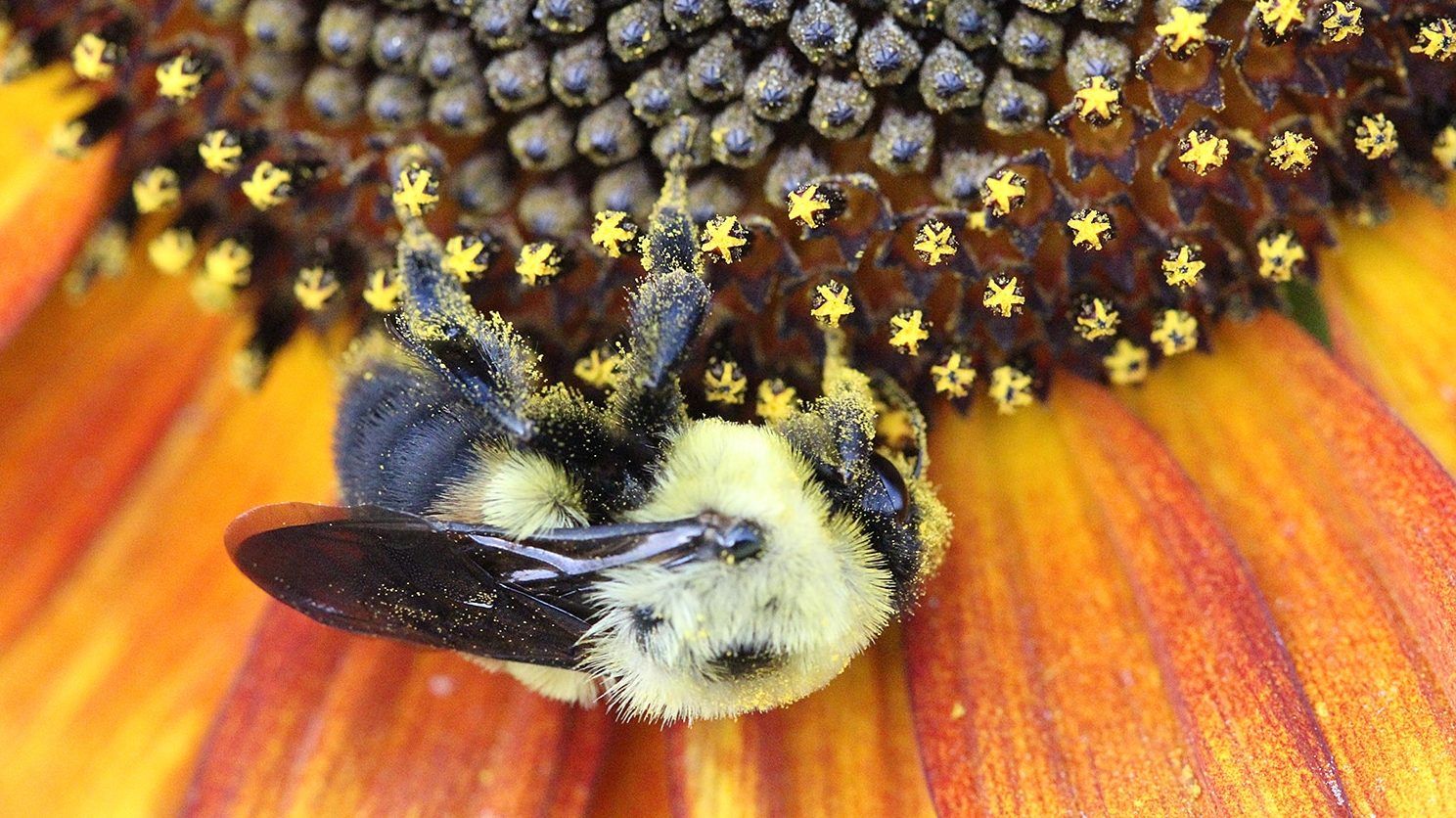Parasite transmission was lower when the insects landed on long, narrow flowers

Bees that land on short, wide flowers can fly away with an upset stomach.
Common eastern bumblebees (Bombus impatiens) are more likely to catch a diarrhea-inducing gut parasite from purple coneflowers, black-eyed Susans and other similarly shaped flora than other flowers, researchers report in the July Ecology. Because parasites and diseases contribute to bee decline, the finding could help researchers create seed mixes that are more bee-friendly and inform gardeners’ and land managers’ decisions about which flower types to plant.
The parasite (Crithidia bombi) is transmitted when the insects accidentally ingest contaminated bee feces, which “tends to make the bees dopey and lethargic,” says Rebecca Irwin, a community and evolutionary ecologist at North Carolina State University in Raleigh. “It isn’t the number one bee killer out there,” but bees sickened with it can struggle with foraging.
In laboratory experiments involving caged bees and 16 plant species, Irwin and her colleagues studied how different floral attributes affected transmission of the gut parasite. They focused on three factors of transmission: the amount of poop landing on flowers when bees fly and forage, how long the parasite survives on the plants and how easily the parasite is transmitted to new bees. Multiplied together, these three factors show the overall transmission rate.
Compared with plants with long, narrow flowers like phlox and bluebeards, short, wide flowers had more feces land on them and transmitted the parasite more easily to the pollinators, increasing the overall parasite transmission rate for these flowers. However, parasite survival times were reduced on these blooms. This is probably due to the open floral shapes increased exposure to ultraviolet light, speeding the drying out of parasite-laden “fecal droplets,” Irwin says.
The findings confirm a new theory suggesting that traits, such as flower shape, are better predictors of disease transmission than individual species of plants, says Scott McArt, an entomologist focusing on pollinator health at Cornell University who wasn’t involved with the study. Therefore, “you don’t need to know everything about every plant species when designing your pollinator-friendly garden or habitat restoration project.”
Instead, to limit disease transmission among bees, it’s best to choose plants that have narrower, longer flowers, he says. “Wider and shorter flowers are analogous to the small, poorly ventilated rooms where COVID is efficiently transmitted among humans.”
If ripping out coneflowers or black-eyed Susans isn’t palatable, don’t fret. Irwin recommends continuing to plant a diversity of flower types. This helps if one type of flower is “a high transmitting species,” she notes. In the future, she plans to conduct field experiments examining other factors that could influence parasite transmission, such as whether bees are driven to visit certain types of flowers more often in nature.
